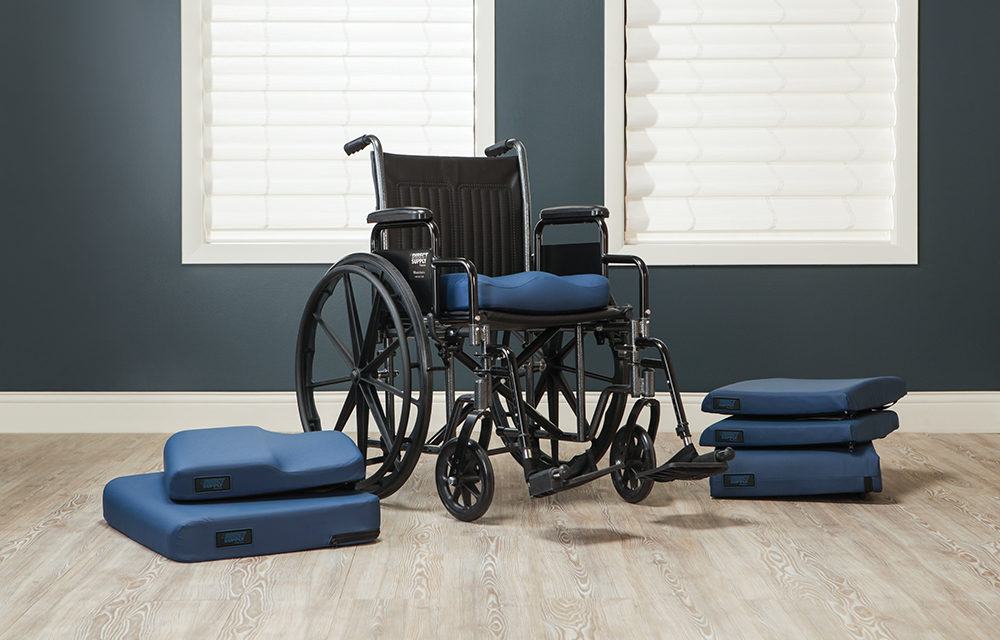While wheelchairs serve an invaluable purpose in your healthcare settings, their nylon or vinyl seats often hammock under the weight of the user. This may be fine for short-term transportation, but conventional sling seats are not suited for long-term use due to safety and comfort concerns.
The best way to optimize the wheelchair experience in your healthcare setting is to augment the seats with cushions. Of course your patients’ comfort is a chief concern, but perhaps even more important are the clinical benefits the proper cushion can bring. Maintaining skin integrity, treating existing wounds, preventing skin tears and bruising, and even correcting posture issues are all possible outcomes of outfitting your patients’ wheelchairs with the proper cushions. Knowing how to choose the perfect wheelchair cushion can comfortably and clinically benefit your patients.

Read on to discover Kelly Sullivan’s helpful tips for selecting the perfect cushion. As Senior Product Consultant for Direct Supply, she has more than 10 years of Senior Living and Healthcare experience with specialization in rehabilitation product evaluation and selection.
What kind of cushion shape or contour is best for my patients?
A “one size fits all” approach or assuming that all cushions are created equal is a big mistake – each unique patient has specific needs and providing them with an improperly shaped cushion could lead to skin breakdown or hazardous positioning. So while a flat cushion is good for comfort, it’s important to think about the contour when we consider the benefits of positioning. Contoured wheelchair cushions provide the high-resiliency support and comfort that your patients need.
Consider these popular cushion shapes:
Saddle-Shaped Cushions – Perfect for patients with hip rotation or a lack of abduction control.
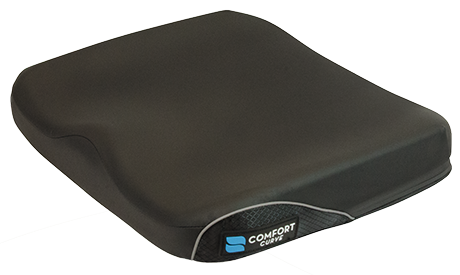
Pommel-Shaped Cushions – Suited for patients who tend to cross or buckle their knees.
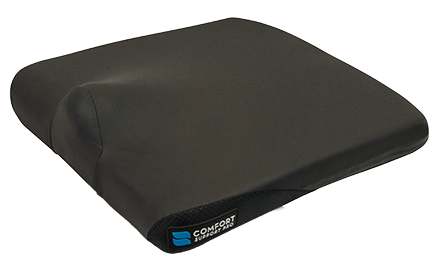
Wedge-Shaped Cushions – Designed to help position patients with posterior pelvic tilt to remain back in their seat.
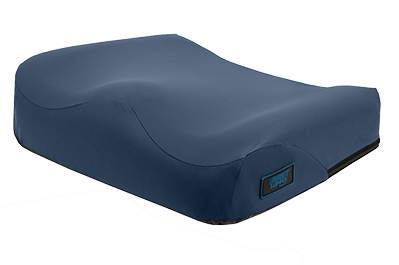
Anti-Thrust Cushions – Used to help mitigate slide for patients who are constantly moving in their chairs.
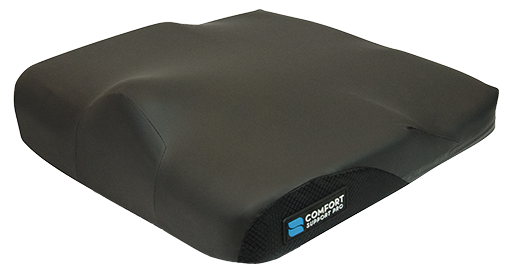
What type of materials make for the best cushions?
The three main types of wheelchair cushion materials are foam, gel and air cushions. The materials that your cushions are made of can also have large impact on the experience of the patient using them. Choosing between foam, gel and air cushions each present their own set of benefits.
Select from these three material options:
- Foam Cushions – A common choice for many healthcare settings due to the great immersion they present. Maximizing immersion with higher densities and multiple layers of foam allows for a greater degree of pressure management and offloading properties.
- Gel Cushions – Gel helps regulate body temperatures, and because patients may be spending large amounts of time in their wheelchairs, keeping their temperature regulated helps reduce the buildup of moisture that can lead to discomfort and infection. Maximize this benefit and look for multi-pack units or cushions completely made of gel.
- Air Cushions – Air cushions keep the seating surface cool and dry for all-day comfort. Given their extra buoyancy, they are also the preferred solution for advanced pressure management, which can help with the treatment of pressure ulcers and related injuries.
While searching for healthcare wheelchair cushions to improve care for your patients, purchasing from a reputable supplier with expert knowledge of the cushions and materials you are considering can ensure you’re getting the items that you need.
Browse through our vast selection of wheelchair cushions to explore potential solutions for your patients’ unique needs or contact us to learn more!
